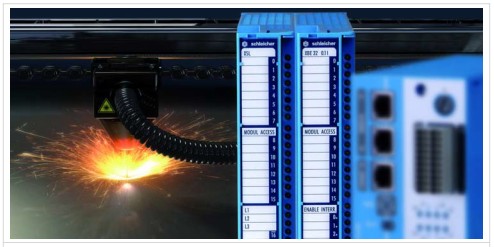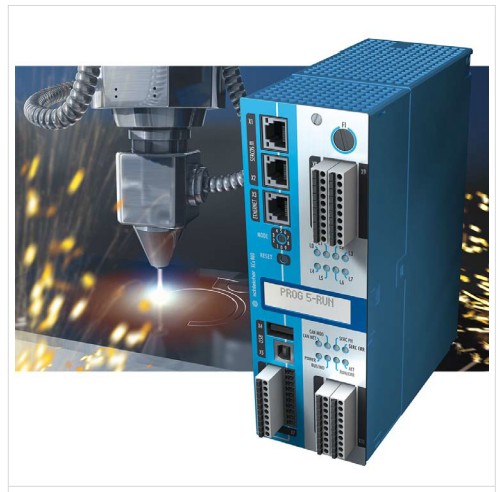
| --------------------- |
| 雷射、電漿切割 |
| --------------------- |
| 研磨、拋光 |
| --------------------- |
| 機械手臂、搬運 |
| --------------------- |
| 食品機械 |
| --------------------- |
| 重型機械 |
| --------------------- |
| 汙水處理 |
| --------------------- |
| 廢棄物真空消毒 |
| --------------------- |
| 工具機 |

|
雷射源控制 Laser control system --------------------------------------------------------------------------------- New control system expands boundaries for the effective application of Laser processing devices.Laser processing facilities are second to none in versatility and economy, particularly in the segment of high-speed precision processing. In the direct sense of the word, lasers offer "bright spots" to each and every company that asserts its market position with the argument "efficient production at high speed and superior quality". Laser technology also opens up roads to production tasks for which previous technologies were either inadequate or failed completely to implement. Hitherto however, for reasons of economic viability, certain tolerances of the extremely fast and highly dynamic processing stations either had to be grudgingly accepted or compensated at great expense. Now Schleicher's newly developed CNC controller puts an end to compromises!
Fig.1 Laser facility + XSL module The decisively greater level of precision, quality and speed resulting from the new control system means more than a plus in competitiveness for the operator. This modular CNC control system, with its XLS Module specifically "cut to size" for laser applications, was developed with the motivation to effectively counteract the tolerances resulting from the signal delay times encountered in laser facilities. A prominent feature of this programmable hardware is the extremely high resolution of 1 µs at the outputs to the laser driver. For example, the CNC is well-suited for a high-precision laser cutter controller including the optimization of fast and highly dynamically controlled contour tracing. Feature results of applications in the field of laser control:
When correspondingly controlled laser facilities provide an all-in-all significantly greater level of economic efficiency, then this is due in particular to the fact that development work on the XLS CNC controller module incorporated into the concept both the influencing factors of the plant components as well as the materials to be processed. Challenge: Gap controlThe efficiency and quality of any non-touch processing method is highly dependent on the optimum performance of the respective "processing heads", and this in turn depends on maintaining constant gaps to the material being processed. The high speed of work demands fast and dynamic reactions to the contour guide and to material tolerances. Communication between the distance sensor and the controller is "programmed for real-time". This ensures an effective compensation of influences from spatial tolerances while maintaining the highest level of precision and speed. Challenge: Power controlA factor directly interacting with contour guidance along the respective path and processing speed is the optimization of laser power control, for example to maintain a constant laser-cutting temperature at optimum focal spot location. Continuously adapted to the different contour-dependent speeds, the logic of the controller generates signals for the respectively requested adjustment values. The new level of precision becomes particularly apparent when micro crosspieces are made during laser-cutting and laser-drilling processes. While operators using conventional controllers have to accept considerable tolerances with respect to the positions and lengths of the crosspieces or the hole distances, the high resolution offered by the XSL Module makes it is possible to position the on and off switching positions with an accuracy hitherto unknown.
Fig. XCx 800 with modules The newly developed system consists of the base controller and, depending on the task at hand, different supplementary modules – in laser control for example the XSL with its resolution of 1 µs.
With a reaction time 1 µs and dynamically controlled laser movement, the new XSL system guarantees:
Besides the classic fields of use such as welding, cutting or perforating, this technology now opens itself up to expanded applications such as material refinement and surface finishing within the glass and ceramics industries, quality-optimised processing of composite materials or the creation and measurement of very fine structures. Challenge: Flexibility (CAD/CAM programs)The complexity of parts processed using laser technology is continually increasing. As this development progresses, 3D-processing using three axes has become almost a minimum requirement for the corresponding controllers and the CAD/CAM programs. At the same time the demands placed on flexibility are increasing. Looking just at market-side needs, we see that the spectrum of lot sizes requested includes sample parts and pilot productions as well as small and medium-size series. Schleicher's new high-performance control system sets the trend with respect to the processing of highly-complex tasks:
Upgrade in 10 secondsThe new XSL assembly is characterized not only by its highly complex control functions and the currently shortest reaction time of 1 µs for these types of applications, but also for the standards that it sets for more flexibility. Particularly mechanical engineering companies appreciate the easier after-sales service that the comfortable handling of upgrades facilitates. Adapted to the needs of the customer, support is provided in a speedy and uncomplicated manner. Downtimes are limited to a minimum. Challenge: Precise localizationThe measurement inputs can detect rapid edge changes with a resolution of 1 µs. This facilitates high-precision position-feedback / localization for feeding workpieces and processing materials – even at high drive speeds. The economic advantage: The times required for aligning materials are significantly reduced. |








